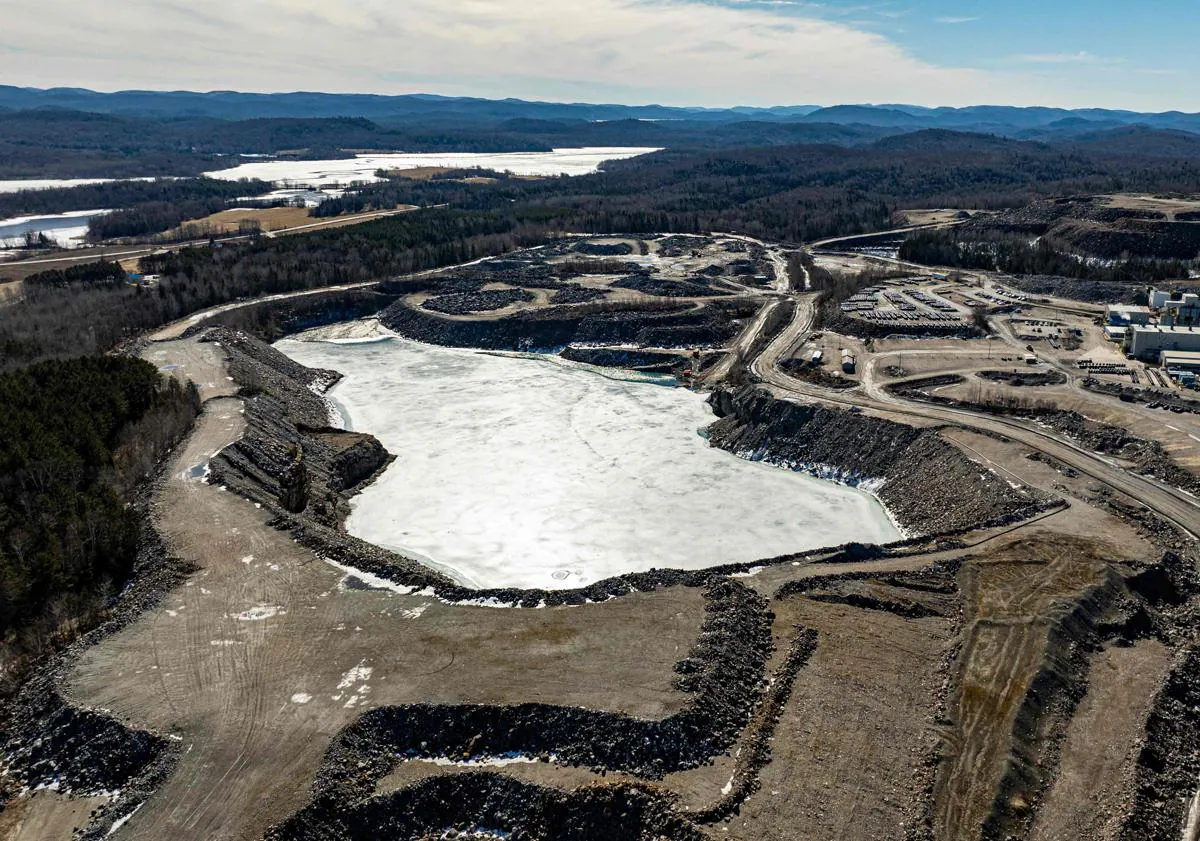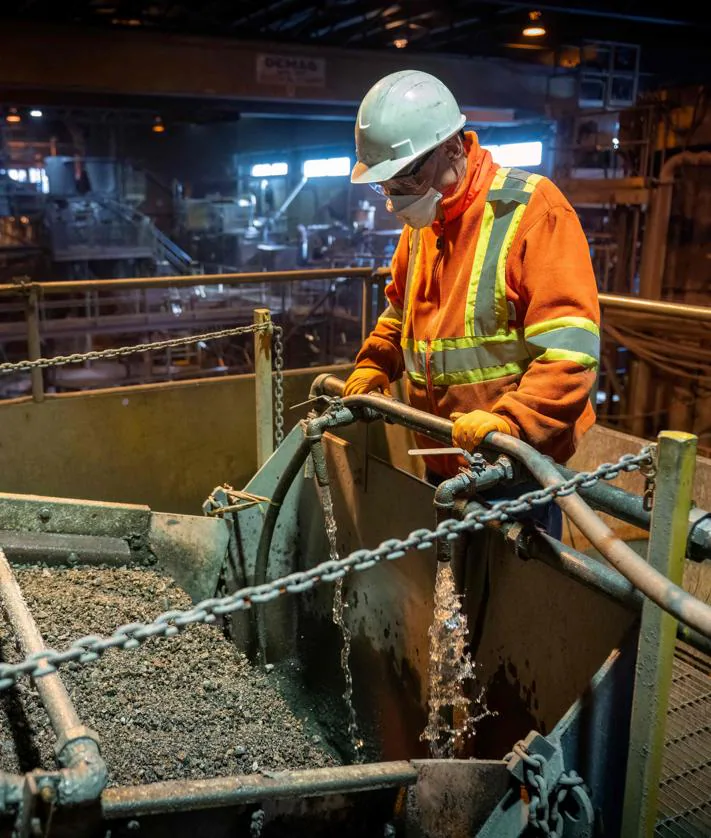China is fully committed to the electrification of mobility – it is the country with the most electric vehicles – and has become the main manufacturing power of key elements for renewable energies such as solar, of which it is also the territory with the most installed power . The West, which is behind in these technologies, is working in parallel to develop other complementary bets: from green hydrogen to synthetic fuels. The maxim is to adopt a decarbonization strategy that is technologically neutral: that is, each technology is allowed to make its contribution to the solution of a climate emergency that, fortunately, is less and less questioned.
But they all contaminate. CO2 is always emitted at some point in the process. Electric vehicles, for example, do not release any gas during use, but the extraction of the raw materials necessary to manufacture their batteries – mostly in underdeveloped countries where no one respects any environmental or labor legislation – is dirty. And the same can be said about the fate of those batteries when they have degraded. Additionally, they are only truly clean if they are charged with renewable energy.
As if that were not enough, this energy transition is transforming the relationships of interdependence that have been forged during the era of fossil fuels. The leading voice is no longer the oil producers, forced to diversify their economy before their bargain runs out, but China. And, for this reason, the West promotes technologies that reduce its dependence on the Asian giant. It is a strategic necessity.
Today we analyze this situation from three different perspectives.
-
Battle of technologies in search of self-sufficiency.
-
Pollution that the consumer does not see.
-
What matters most is the price.
-
Dependency relationships
Battle of technologies in search of self-sufficiency
In the technologies of the 20th century, China was clear that it could not compete with the West. A good example is the combustion engine. At most, it could hope to copy and manufacture decent products whose appeal was in their quality-price ratio, but not in excellence. The same thing happened with mobile phones until the emergence of 4G. However, the productive strategy that attracted huge amounts of foreign investment allowed the Asian giant to create the most powerful industry in the world. And, with it, its own multinationals.
One of the few solar panel factories in Europe.
Reuters
The 21st century has given him the opportunity to take a leap forward and lead the development of technologies that will be key for Humanity. Once again, both cars and mobile phones are good examples to demonstrate this, although now the former are electric and the latter are close to connecting to 6G networks. In both cases, China leads the entire process: from the development of the key technology for these products, to their manufacturing, including the extraction of the raw materials necessary to make them a reality. In fact, it processes the vast majority of rare earths that almost all new technologies require.
No other country has this capacity. And that has turned the Great Dragon into an unparalleled power in sectors as relevant to the energy transition as solar – it manufactures more than 80% of the panels globally -, wind – a market share of 60% -, or that of electric mobility – it also produces 60% of all electric vehicles. Furthermore, its presence in the global supply chain is so overwhelming that it is impossible for its competitors to manufacture alternatives without its components.

Rare earths, the new oil.
Reuters
With the experience of the pandemic still fresh enough not to have been forgotten, the West is aware that this dependence does not favor it. For this reason, for the moment it imposes tariffs to reduce the attractiveness of Chinese products and extract at least a little fiscal juice for state coffers. But, in the medium term, it is evident that self-sufficiency involves developing alternatives that reduce dependence on China. Options whose components and/or raw materials can be created in our environment. In this regard, Spain is betting heavily – although it seems less and less – on green hydrogen, and Europe is also increasingly looking with better eyes at biofuels and synthetic fuels. Although they do emit CO2 during use, as the ingredients with which they are produced – for example, used cooking oil – capture CO2, producers argue that the net result is zero. And that's what really matters in the end.
-
There is no activity without pollution
Pollution that the consumer does not see
There is something indisputable: existing pollutes. Human activity that requires energy pollutes. Even the one that is done with full environmental awareness. We tend to think about the emissions derived directly from the use of something, but not about those produced for the manufacture of that product – or the energy it uses – and those derived from its management when it is thrown away.
For example, to extract one kilo of lutetium, one of the rarest earths, it is necessary to sieve 200 tons of mineral. Lithium is much more abundant, but to find it you have to use elements such as sulfuric acid or sodium hydroxide, which penetrate the soil and contaminate the ecosystem around the mine. And all of this does not take into account the water and energy that is necessary to extract and purify these materials.
Open pit mine and graphite processing facilities in Canada.
AFP



According to a study published by Nature, the demand for lithium will multiply by up to 40 by 2050. It will provide the batteries necessary to move without emitting CO2 and so that we can continue using our mobile devices. Although new formulas are being experimented with to produce it, everything indicates that, although it will be key to solving a problem, it will also cause new ones. Because, in some cases, the environmental impact of rare earth mining exceeds that of coal or oil.
As European farmers who have demonstrated in recent times criticize, our rulers approve strict regulations for production in the Old Continent but then look the other way when they import products from other places. Something similar happens with gas: we don't want to do 'fracking' to get it out, but we buy it liquefied from the United States, which has no problem obtaining it this way. And let's not veto the Russian either because, listen, Vladimir Putin will be satan, but we need to warm up in winter.
If we looked closely at where the raw materials used to produce the goods we consume come from, we would often shake our heads. It is the footprint that we do not see, because we have relocated it. This way we can stick out our chests and claim that we are champions in the fight against climate change, while the dirty work is done far away. But without taking into account that it is still the same planet.
-
Consuming patterns
In the end, what matters most is the price
That environmental awareness is growing is undoubted. But the impact it has on consumerism is small, too. And, in the end, the biggest footprint is the one we leave when we consume. However, when making a decision with the portfolio, most people are clear about it: empty it as little as possible. Especially in clothing and devices that have had their days numbered from the beginning. If that means that the product is going to last two newscasts, then okay. We have already internalized planned obsolescence and we ourselves promote it when we replace devices that work correctly because others are more attractive to us.

Shein pop up store in Barcelona.
EP
Furthermore, the rise of Chinese platforms such as Aliexpress or Temu and brands such as Shein show that we – especially the younger ones – prefer to buy many low-quality products rather than fewer but good quality ones. And the carbon footprint they leave on the long journey from the East does not make us lose sleep either. Nor the conditions in which they have been manufactured. In the end, the price almost always prevails.
As the head of the investment firm BlackRock, Larry Fink, says, “no one will support decarbonization if it requires us to stop heating ourselves in the winter and cooling ourselves in the summer; or if the cost of doing so is prohibitive. For this reason, more and more voices are demanding the introduction of a carbon tax to make the price of products that pollute the most less attractive. Could it be a solution?
Is all for today. I hope I have explained well some of what is happening out there. If you are signed up, you will receive this newsletter every Wednesday in your email. And, if you like it, it will be very helpful if you share it and recommend it to your friends.
#told #energy #transition